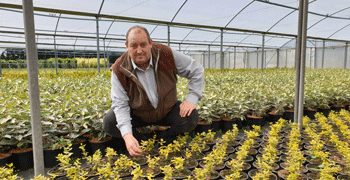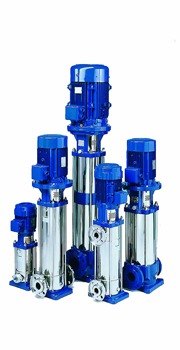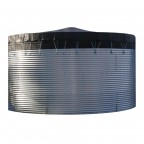Irrigation or irritation?!

Peter Robinson, ICL Technical Area Sales Manager
There can be, and often is, a fine line between irrigation or irritation, according to Peter Robinson − ICL technical area sales manager advising growers in the North West of England. In this first in a new series on irrigation, Peter – who has over 30 years’ experience as a nurseryman / precision irrigation and fertigation specialist − highlights why it is important to get your system working effectively and efficiently.
Well designed, and correctly operated, irrigation systems are worth their weight in gold and are often under-appreciated.
Poor irrigation systems are forever the bane of growers’ lives and have knock-on effects regarding plant quality, losses and − perhaps most importantly − the water and wage bill caused by additional hand watering costs.
In contrast efficient well-operated irrigation systems, while helping to eliminate the issues highlighted above, can also be used to apply fertilisers and nematodes etc in a highly effective and controlled manner.
System to suit your scenario
The efficiency of individual irrigation systems is notoriously difficult to quantify. Does it apply water? – yes. Does it apply water uniformly? – errm not sure. Does it apply water at the correct rate? – errmmm. You get the picture, I guess. “But I can live with it,” is a phrase I’ve heard all too often.
There are, of course, knock on effects to ineffective systems – wastage of water and/or water soluble fertilisers, increased plant disease issues and fertilizer leaching, to name but a few.
In addition to the equipment employed at the business end to apply the water (mainly sprinklers and drip systems), other components of the irrigation system need to be designed to suit the scenario in question. A number of factors should be taken in to account – some of the common ones being; is it a specialist nursery or mixed production, is it water from the mains, borehole or rain water and will it be recycled?
Key components
Before turning to how to improve irrigation efficiency, let’s take a brief look at the main components of an irrigation system:-
Pumps come in various forms – horizontal, vertical, electric, diesel, fixed and variable speed. All can be seen working on UK nurseries.

Image: Pumps
While tanks are many and varied, galvanised steel sectional tanks with liners and covers are most prevalent.

Image: Steel Water Tank
Fertigation systems vary from simple venturi type injectors, through water powered dosing units to computer controlled bespoke dosing systems − usually with valve control.
Header systems were traditionally a ring main around the nursery, or more commonly a pipe from the pump house to the furthest point of the nursery. Often this has been extended (many times!) and may branch off in various directions. The pipes are often extremely elusive and have a habit of not being quite where the grower thought they were laid when a repair or alteration is required.
Valves can be manual, electric or hydraulic and 24VAC multiwire systems − from a central controller − are the most prevalent. However, 2wire decoder and even wireless systems are gaining in popularity.
Sprinklers and drip systems are normally used for application, although capillary systems are used on some nurseries.
In the next instalment, Peter will highlight a number of practical pointers to help growers improve parts of their irrigation systems.
